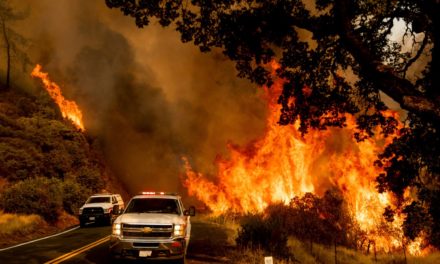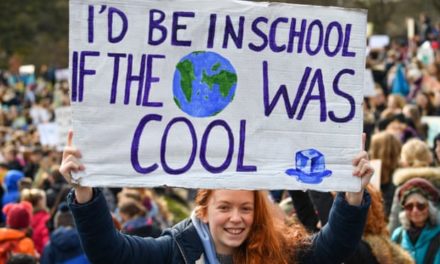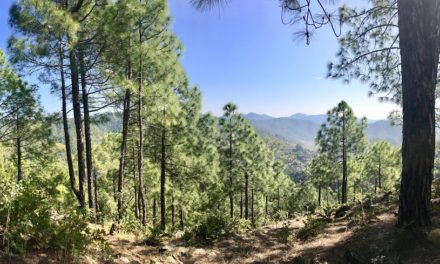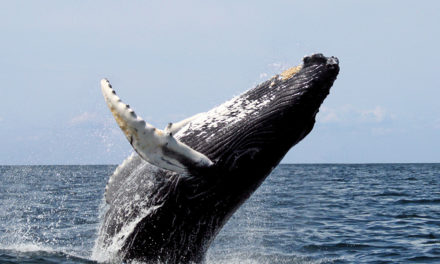GUEST CONTRIBUTOR – H.E. Kevin M. Isaac, High Commissioner (St. Kitts and Nevis)
 The changing environmental landscape of the Caribbean stimulated me to examine more closely the phenomenon of Climate Change. Fortunately, there is an abundance of literature on the subject. In reviewing it, I was somewhat intrigued to observe that, notwithstanding, the mounting evidence of the dramatic shifts in our climates, including increases in extreme catastrophic climatic events and the accomplishments of the forward-leaning aspirations of COP21; Climate Change is routinely dismissed, in some quarters, as a hoax or normal cyclical weather variations.
The changing environmental landscape of the Caribbean stimulated me to examine more closely the phenomenon of Climate Change. Fortunately, there is an abundance of literature on the subject. In reviewing it, I was somewhat intrigued to observe that, notwithstanding, the mounting evidence of the dramatic shifts in our climates, including increases in extreme catastrophic climatic events and the accomplishments of the forward-leaning aspirations of COP21; Climate Change is routinely dismissed, in some quarters, as a hoax or normal cyclical weather variations.
Considering the two schools of thought, it became necessary to explore which of the two strands could better explain why once luxuriant landscapes across the Caribbean, now often and for long periods, seem to give way to parched patches of brown; or why previously reliable water sources, on some islands, now only serve up enough water to meet government-regulated rations.
This journey meant trying to understand the difference between changes in climate patterns and Climate Change. Climate Change is understood to be “a large-scale, long-term shift in the planet’s weather patterns or average temperatures”. According to the literature, the “Earth has had tropical climates and ice ages many times during its 4.5 billion years. Therefore, for eons, there have been variations in our climates and those changes were due to natural variations”.
However, “since the last ice age, which ended about 11,000 years ago, Earth’s climate has been relatively stable at about 14°C, but in the last 200 years, average temperatures have been increasing.” There is now mounting “scientific evidence that human activities now contribute significantly more Green House Gases (GHGs), such as carbon dioxide, methane and nitrous oxide that cause Climate Change – largely through use of fossil fuels and changes in land use linked to global human population growth.”
Having regard for evidence indicating increases in the Earth’s temperature; I began to ask why therefore do people still refute the science. My appreciation was assisted by the interpretation of a leading psychologist who said, “people respond rationally to PAIN”. In other words, “people react to things which are Personal, Abrupt, Immoral and Now [P.A.I.N]. Hence, because Climate Change occurs gradually and its effects appear greatest in remote corners of the world or are expected to happen in the future; people who are not immediately affected, tend to ignore or deny the existence. They are therefore less inclined to act.”
While scientists and politicians debate the issue, in several small island states, we witness an increasing frequency of catastrophic climatic events which threatens livelihoods, undermines and imperils sustainable development. For these islands, their small size is an inherent vulnerability. This vulnerability is exacerbated by the fact that “they are generally insular, low-lying coastal states with growing populations. Infrastructure costs are higher which makes post-disaster resilience more difficult. The islands generally have limited or no natural resources and small economies which suffer diseconomies of scale including geographic and economic isolation. They are highly dependent on trade and must import most of their food and energy. Additionally, they tend to be extremely prone to natural disasters.”
Notwithstanding the existential threats faced by these island nations and rejection, by some, of Climate Change; the last couple years have given me reasons for optimism. I took comfort in the decisions of several Caribbean governments to show leadership and to take matters into their own hands by committing to work towards greening their development and to achieve carbon neutrality. These poor, vulnerable small island states are also taking steps to develop renewables i.e., geothermal, solar and wind energy and to reduce long-term dependence on imported fossil fuels.
Furthermore, this past May, I participated in a Commonwealth-sponsored Conference on ‘Regenerative Development’. It spoke to new opportunities for small vulnerable countries to combine national efforts in Climate Change reversal and sustainable development. This conference was not unduly preoccupied with the recognised threats posed by Climate Change. Instead, it offered windows of opportunity through which governments could refocus policies to better exploit existing national programs, run by civic society and indigenous group, more systematically to reverse the effects of Climate Change, while simultaneously working to achieve resilience, mitigation and adaptation.
I was further impressed by the insistence on the need to change the Climate Change debate by reshaping the narrative and by using tried and tested efforts to change behaviours and reverse Climate Change. From the empirical analyses done by a group presenting at the conference, I discovered one of the practical ways to reverse the effects of climate change lies in the empowerment of girls and women. It was argued that their education has a direct correlation and transformative impact on mindsets and on societies; and given the nature of many societies in the developing world – where the woman’s role is central – to effect real change, they must be included because “women can (and do) play a critical role in response to climate change due to their local knowledge of and leadership in e.g. sustainable resource management and/or leading sustainable practices at the household and community levels.”
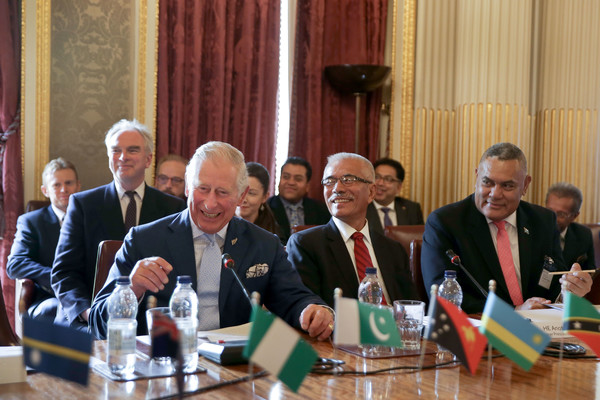 Women continue to be excluded for a variety of reasons including societal biases, skewed employment practices and deep-seated, stereotypes. However, their inclusion is not simply a matter of mainstreaming or a moral obligation. It is an economic imperative. It is held that the economic inclusion of women could “add some US$12trillion in global growth by 2025”. This would create significantly more resources for climate adaptation and mitigation.
Women continue to be excluded for a variety of reasons including societal biases, skewed employment practices and deep-seated, stereotypes. However, their inclusion is not simply a matter of mainstreaming or a moral obligation. It is an economic imperative. It is held that the economic inclusion of women could “add some US$12trillion in global growth by 2025”. This would create significantly more resources for climate adaptation and mitigation.
Regrettably, however, according to the literature, the adverse climactic events will continue and could permanently alter Caribbean and Pacific islands’ landscape. Such events will continue to challenge sustainable development efforts, undermine economic development and reduce agricultural output with implications for long-term food security. They will also impact the islands’ “biodiversity, marine ecosystems, fresh water resources and people’s health. We could soon witness changes in migration patterns, employment opportunities, job security, energy, transport and infrastructure costs.”
These are challenges which require a holistic and inclusive approach. Climate change cannot be wished away or ignored. Political leadership on the environment is not the province of any one country, group or leader. While charity is said to begin at home, so too is climate change reversal. Indeed, we need international cooperation and partnership, but we must also rely on our own domestic efforts and indigenous knowledge. We must be as eager to change policies and enact appropriate legislations as we are to empower all our citizens and change mindsets. It will require greater fairness and inclusion. It will require boldness and a willingness to act. It will require the engagement of the entire planet.
]]>
- What’s Happening in Yemen? - 28th June 2019
- World Facing ‘Climate Apartheid’ According to UN Expert - 25th June 2019
- Enabling Women - 4th January 2019

![[Re]thinking Climate Change](https://trulybelong.com/wp-content/uploads/2018/02/rethinkingO-1200x640.jpg)
